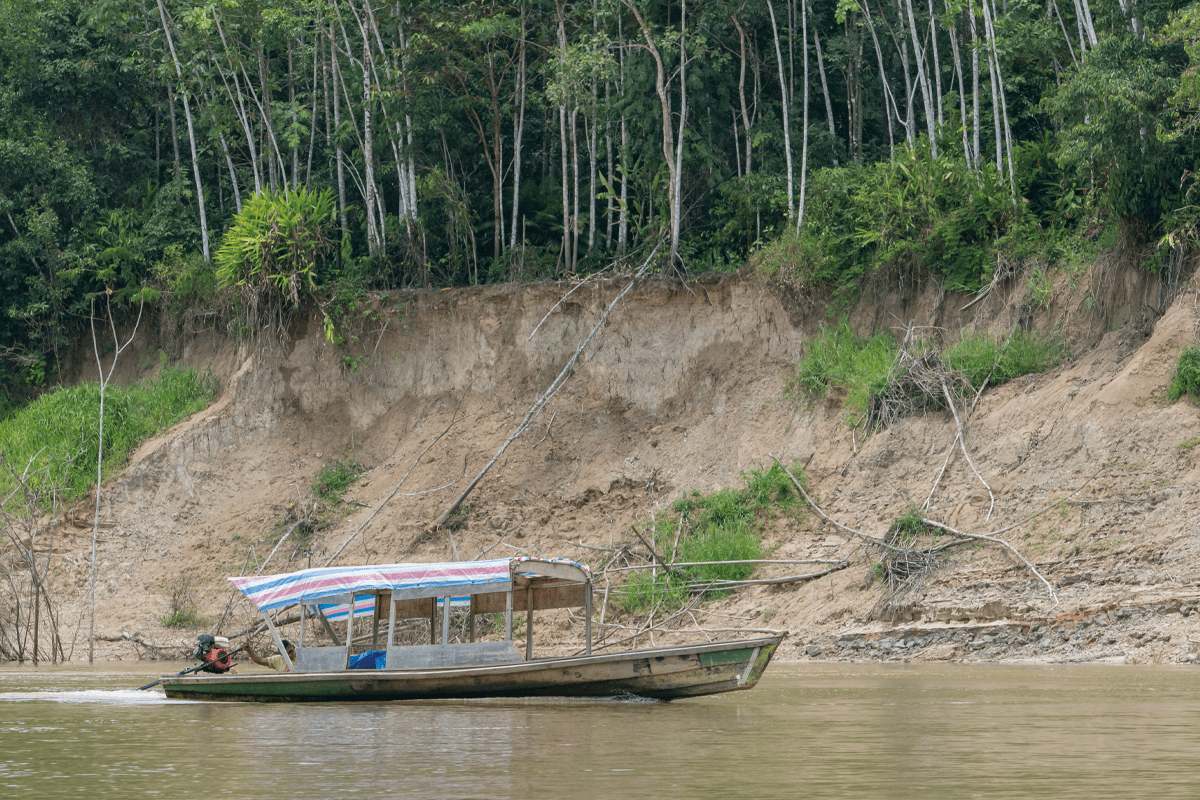Environmental DNA (eDNA) sequencing is allowing scientists to explore piscine diversity in the Amazon without catching fish, but the approach has its limitations when studying environments as diverse as this.

The eDNA method consists of extracting molecules of DNA present in water samples and identifying the species to which they belong by means of genetic markers.
A scientific expedition in the Javari River basin on the border between Brazil, Colombia and Peru has demonstrated the use of environmental DNA sequencing to be feasible to investigate fish diversity in the Amazon.
An article on the research was published in the journal Scientific Reports.
“We need to continue catching and identifying animals by traditional methods in order to create libraries of genetic material,” said Carlos David de Santana, a research associate at the Smithsonian Institution’s National Museum of Natural History in the US and first author of the article. “They will serve as a reference for comparing whatever is found in water samples. As the technique advances, in a few years we may be able to know about all the fish species present in a place without catching them.”
The study was part of the project “Diversity and evolution of Gymnotiformes”, supported by FAPESP and led by Naércio Menezes, a professor at the University of São Paulo’s Zoology Museum (MZ-USP) in Brazil. “The extraction of DNA from water samples creates expectations that bode well for protection of the environment, as the usual methods for collecting samples of aquatic animals include the use of nets and other fishing gear with a negative impact,” said Menezes, a co-author.
The group of researchers spent 18 days on the Javari River, collecting water samples at three of 46 locations where they collected fish specimens. The number of species represented reached the surprising total of 443, and 60 were new to science.
At the sites from which water for eDNA analysis was collected, 201 species were caught using traditional methods. However, only 58, or 26% of the total, were identified with precision at the species level from analysis of the eDNA.
“A possible explanation is lack of reference genetic material in databases that can be used for purposes of comparison. In addition, many species in these locations are entirely new and have never been identified before using conventional techniques,” said Gislene Torrente-Vilara, a professor at the Federal University of São Paulo’s Institute of Marine Sciences (IMAR-UNIFESP) in Santos and also a co-author of the article.
Torrente-Vilara led the expedition as part of the Amazon Fish project, an international collaboration that was supported by FAPESP and resulted in a new understanding of the distribution of fish species in the region.
DNA in 100 mm of water
To sequence the eDNA, the researchers first collected 100 -mm surface water samples at three predetermined locations. The samples were filtered and mixed with a solution to prevent degradation of the eDNA.
The 12S mitochondrial RNA gene is the marker most widely used worldwide to identify fish species from eDNA. To find this small piece of genetic code in the water samples, the researchers used DNA extraction kits designed for analysis of both blood and tissue.
Excrement and animal parts present in the water can be “captured” by the technique.
However, 12S is a slowly evolving piece of genetic code and might not be sufficient to identify all fish specimens at the species level because many species in the Amazon diverged more than once millions of years ago (recently in evolutionary terms).
For the same reason, eDNA sequencing provided a precise portrait only of the orders represented in the samples. It also differentiated the communities that live in large rivers from those that inhabit small streams deep in the forest (igarapés).
The Amazon basin is home to the highest freshwater fish diversity in the world, with more than 2,700 scientifically described species belonging to 18 orders, 60 families, and over 500 genera.
“Even with an adequate library, it would be very difficult to identify everything at the species level with just this marker,” Santana said. “Two electric eels that diverged recently, for example, Electrophorus voltai and E. electricus, could appear to be a single species” (more about electric eels at: agencia.fapesp.br/31386).
Future improvements
The researchers expect the technique to improve enough in the years ahead for more than one DNA sample to be sequenced simultaneously, so that species can be defined precisely.
Until then it will be necessary to create genetic reference libraries, and Santana plans to catalogue genetic material from at least all fish families and most fish genera in the Amazon.
In this context, the authors stress that natural history museums are ideal institutions for creating genetic reference libraries and storing environmental samples. As technologies advance, the material deposited can be sequenced with growing precision.
“Museums conserve samples of biodiversity for a very long time and make them available for study by future generations,” said Aléssio Datovo, another co-author of the article and fish curator at MZ-USP, the first institution in Brazil to collect samples of eDNA. “To keep genetic material viable for such long periods, however, they need to implement cryogenic facilities, or significantly expand the ones they have, rearranging their physical layout and acquiring massive amounts of equipment, such as ultra low temperature freezers and liquid nitrogen tanks,” The technique can also be used for environmental monitoring, and even to engage schools and riverine communities in conservation initiatives via citizen science programs.







